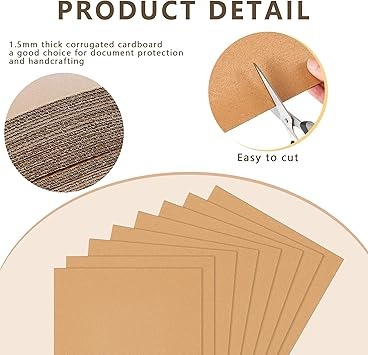Corrugated cartons (also called corrugated boxes or corrugated fiberboard) are the backbone of modern packaging. Used for shipping, retail, and e-commerce, they combine lightweight design with exceptional durability. But what makes them so strong? How do they compare to regular cardboard? And why are they the #1 choice for eco-conscious brands?
This guide covers everything you need to know – from structure and types to customization and environmental benefits.
1. What Is a Corrugated Carton?
Corrugated cartons consist of three layers:
Two flat linerboards (outer layers)
A fluted (wavy) corrugated sheet (middle layer)
This design creates rigidity and cushioning, making them ideal for protecting goods during transit.

Key Features:
✔️ Lightweight yet strong
✔️ Customizable in size, shape, and thickness
✔️ Recyclable and biodegradable
2. Types of Corrugated Cartons
Different flute profiles and wall structures serve unique purposes:
A. By Flute Type (Thickness & Strength)
| Flute Type | Thickness | Best For |
|---|---|---|
| A-Flute | 5mm | Heavy-duty packaging (furniture, appliances) |
| B-Flute | 3mm | Retail boxes, canned goods |
| C-Flute | 4mm | Shipping boxes (most common) |
| E-Flute | 1.5mm | Slim retail packaging (cosmetics, electronics) |
| F-Flute | 0.6mm | Luxury product boxes |
B. By Wall Construction
Single-Wall: 1 fluted layer (standard shipping boxes)
Double-Wall: 2 fluted layers (heavy or fragile items)
Triple-Wall: 3 fluted layers (industrial use)
3. Why Choose Corrugated Over Regular Cardboard?
| Feature | Corrugated Carton | Regular Cardboard |
|---|---|---|
| Strength | ✅ High (flutes absorb shocks) | ❌ Low (single-layer) |
| Weight | ✅ Light | ❌ Heavier at same strength |
| Cost | ✅ Affordable at scale | ❌ Cheaper for small items |
| Customization | ✅ Print, die-cut, emboss | ❌ Limited options |
| Eco-Friendliness | ✅ 90% recycled content | ❌ Often mixed materials |
Best For:
📦 E-commerce shipping
📦 Food packaging (FDA-approved options)
📦 Retail displays
4. How Corrugated Cartons Are Made
Pulping: Recycled paper is mixed into slurry.
Pressing & Drying: Formed into linerboard and fluted medium.
Corrugating: Heat and glue bond layers in a corrugator machine.
Cutting & Printing: Custom shapes, sizes, and branding.
5. Sustainability: The Green Choice
♻️ Recyclable: Over 70% of U.S. corrugated is recycled.
🌱 Biodegradable: Breaks down faster than plastic.
🌍 Carbon Footprint: 50% lower than plastic alternatives.
6. Customization Options for Brands
Make your packaging stand out with:
Printing: CMYK, spot colors, or eco-friendly inks.
Coatings: Matte/gloss lamination, water-resistant layers.
Structural Design: Die-cut windows, handles, or self-locking bases.
7. Common Questions (FAQ)
Q: How much weight can a corrugated carton hold?
A: Depends on flute type – e.g., a C-flute single-wall box holds ~65 lbs.
Q: Are corrugated boxes food-safe?
A: Yes, if lined with FDA-approved polyethylene or wax coating.
Q: Can I compost corrugated cartons?
A: Yes! Remove tape and non-paper labels first.
8. Where to Buy Quality Corrugated Cartons
Look for suppliers offering:
✔️ Bulk discounts
✔️ Custom sizing tools
✔️ Eco-friendly material options
Final Tip:
For e-commerce, test your box with ISTA 3A standards to ensure durability during shipping.

